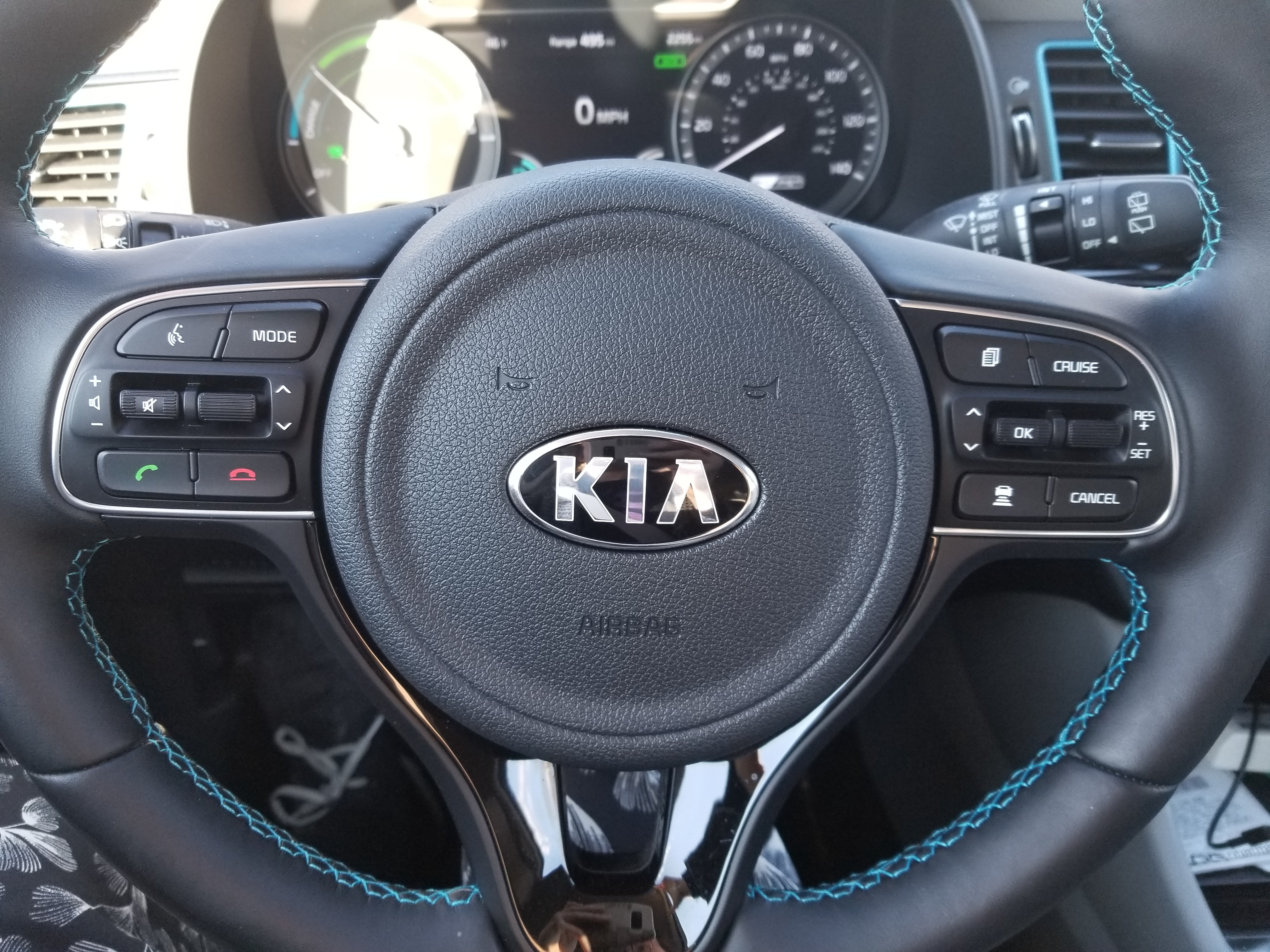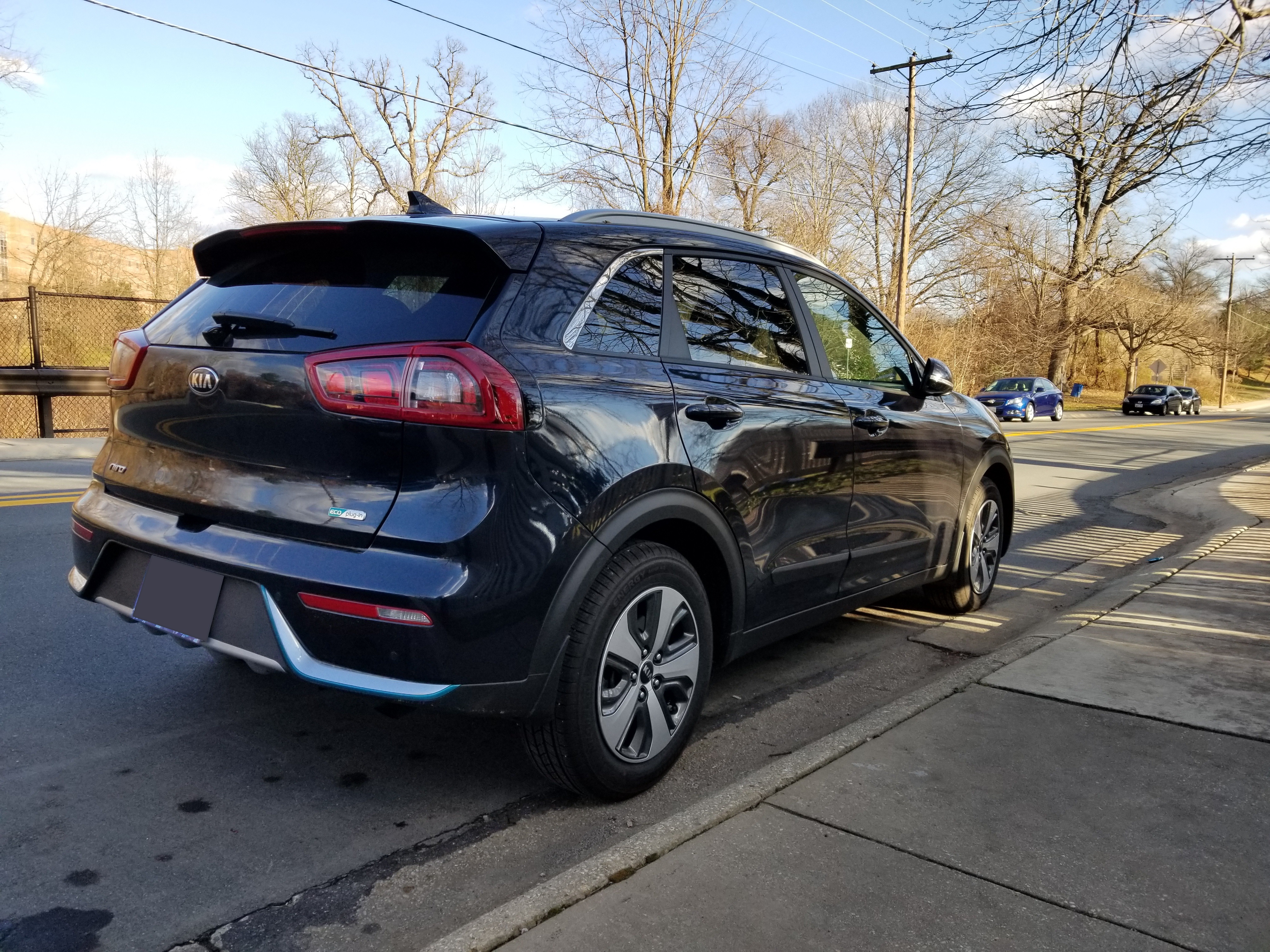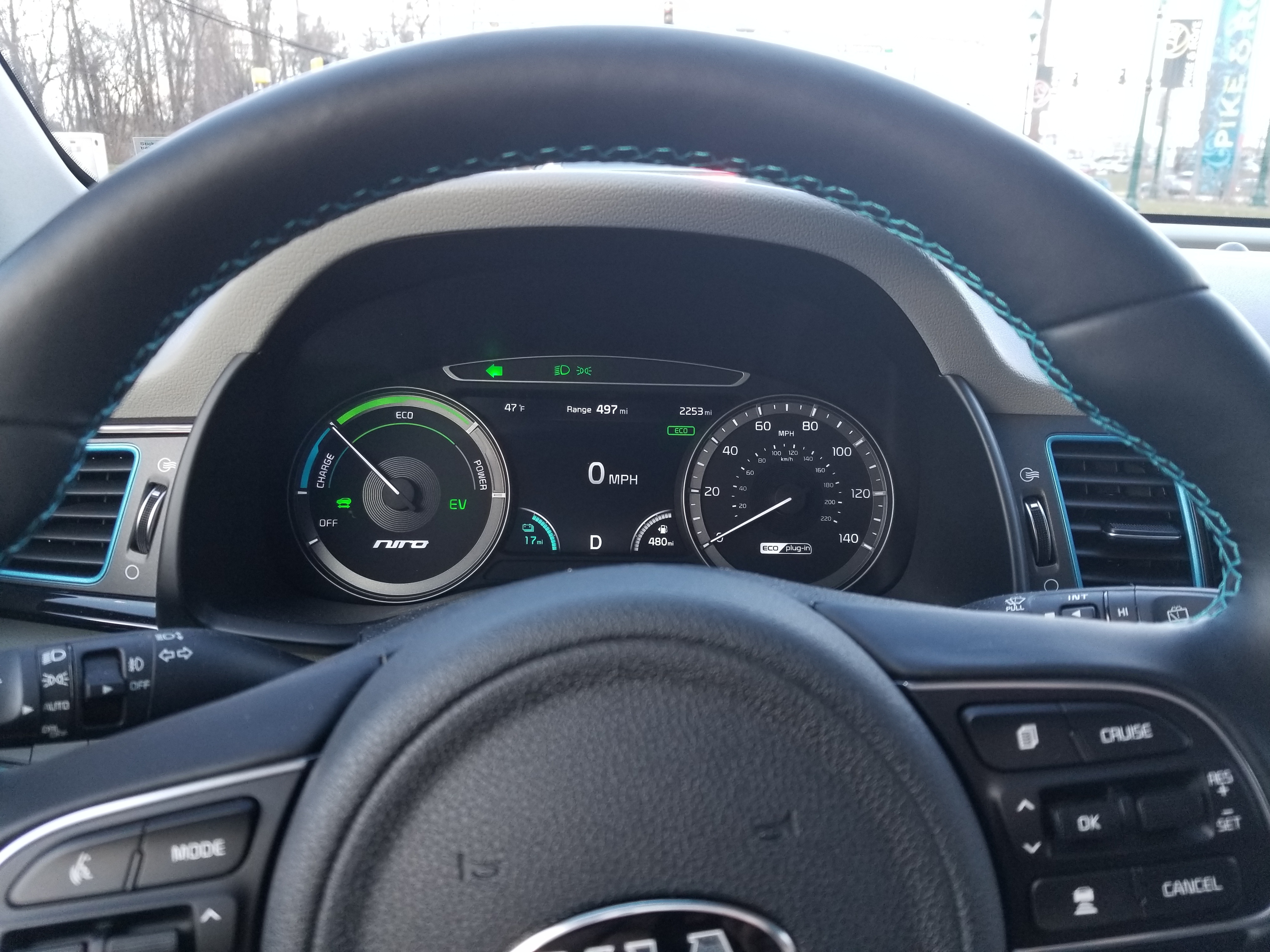
What is it?
The Kia Niro is a hatchback for 21st century America, with all of the connotations that come with that. It's billed as a small, efficient, city driver crossover with all the bells and whistles expected of mid-market crossovers in the modern US market. The Niro is a mature, sophisticated car with none of the youthful energy of smaller, cheaper Kia models; it's very clearly a car that you graduate to rather than from.
The Niro shares the Hyundai Ioniq's powertrain, featuring a 1.6L Atkinson-cycle engine, parallel electric motor, and six-speed dual clutch transmission, but rather than being a Prius-esque fastback family car, it takes the shape of a low-riding crossover.
What is it like?
The best crossovers are truly the weird ones; normal crossovers fall into the forgettable intersection of okay fuel economy, okay internal space, and an okay balance between performance and comfort that fails to impress much in either regard. Examples of "weird" crossovers that are hard to forget might be the Pontiak Aztek with...everything about it really, the Cadillac SRX with its fins and strangely ornate interior with glowing crystal-like turn signal indicators, and the Subaru Outback, that was more like a lifted station wagon than anything else. Does the Niro fall here? Sort of.
The Kia Niro is really a crossover in name only. It's much shorter than other crossovers, and has a sedan-like wheelbase and turning circle, but it has a somewhat cramped interior that results from its higher floor. The cramped feeling is exacerbated by the thick C and D pillars, made necessary by rollover protection strengthening, itself inflated by the heavy curb weight of the car. The Niro, though a midsize vehicle with a compact wheelbase, weighs 3000 pounds, well above most compact-midsize sedans like my 8th gen Civic. That weight is one of the main things that keeps the Niro from purely feeling like a taller hatchback.
Fortunately, the Niro is still somewhat lighter than its competitors, and sits lower, too; it features a fairing under the engine compartment, variable radiator intake area, and a sloped rear roofline that reduce drag and improve highway fuel economy and noise.
The Niro is very good on noise; its engine is quiet except when it's in sport mode, and it nearly always shuts off at stops except for when HVAC or electric demands mandate otherwise. Wind noise is not really a concern, the brakes are inaudible, and the suspension damps out most nasty bumps.
The interior is very advanced and sophisticated, and has many features I don't fully understand, coming from an outdated car like my Civic. The Niro has adaptive cruise control, lane following, phone connectivity, built in satnav, multiple menus that are controllable through steering wheel buttons, a versatile stereo, and heated steering wheel and seats that, in cold weather, prevent the driver from having to activate the gas engine in order to stay warm, though these heaters obviously cut into electric range. The Niro is quite contemporary technologically, and offers all the strange and confusing connectivity and assistance options that modern cars are expected to. Curiously, though it features keyless start, retracting side mirrors, and one-touch locking, the rear gate is manually actuated, and seems to have no internal release. One of the only complaints I hold about the interior features is that it’s difficult to actually shut off the multimedia display; the owners of this car used the special configurable button on the entertainment console to just turn that screen off; I think Kia should have made it easier to just disable that distracting display straight out of the factory.

Mechanically, the Niro is a very crowded car; perhaps its most impressive aspect is the fact that Kia was able to squeeze everything they needed into such a compact vehicle. It has a remarkably compact rear suspension setup, squeezed in between the gas tank, batteries, and muffler, and it uses a tire sealant and reinflation kit in place of a spare because the space a donut would take is used instead by part of the extensive battery system. The 12 volt starter battery is placed in the trunk, as all available space under the hood is used by the sophisticated propulsion system. The air cleaner doubles as the decorative cowling over the engine, as the normal location for an air cleaner is occupied by a switching or coolant system casing for the electric motor, as is any space that a battery might occupy under the hood. I'm willing to guess that the main reason the Niro is naturally aspirated is the fact that there simply isn't space for a turbocharger and intercooler.

How does it drive?
The Niro's driving characteristics point to the fact that it wants to be many different things. It has a fully electric mode that, if you opt for the more expensive plug-in version, gives you about 20 miles of electric range, provided you drive with a light foot and prevent the engine from kicking in. If the engine does kick in, it's no great impact to efficiency; it's a small 1.6L I4 that developes a cute 103hp due to its highly efficient Atkinson cycle; I'm pretty sure I could drive the Niro in sport mode all the time, taking my time on the upshifts, and I would still get comparable or better fuel economy than my 2006 Civic. The electric motor, attached to the crankshaft, develops about 45 hp on the conventional hybrid, and about 60 on the plug-in hybrid, and while this makes for sedate all-electric acceleration, it bolsters the engine's power quite nicely when the driver demands grunt.
Sport mode makes the Niro angry; however, it's a heavy car that makes hatchback power and as such, it's pretty easy to manage. Putting your foot down can lead to some entertaining wheelspin, but the Niro isn't powerful enough to scare you. Sport mode also makes the engine much more lively, and its excited exhaust note and faster throttle response are very obvious in sport mode. The dual clutch transmission's manual mode is part of sport mode, and the driver is free to let the transmission do its own shifts or tell it what they want. Either way, the DCT shifts fast and gets power on the road well, but it sometimes makes questionable shift decisions in normal driving. One strange caveat to sport mode is the surprisingly low redline of the engine, at 5500 rpm. For better or for worse, the ECU protects this redline quite aggressively, and is not afraid to upshift or reduce throttle settings to ensure the engine doesn't exceed its normal operating parameters. My guess for this low redline is that it results from the engine's Atkinson cycle operation, and the need to reduce the risk of knock.

The Niro's brakes are also a little strange; it uses regenerative braking very heavily, which I welcome, but it seems reluctant to begin to apply its mechanical brakes until the pedal is firmly depressed; using sport mode does not fix this. If you have the Niro in sport mode and you're pushing it hard, get used to shoving the brake pedal to get real mechanical braking in addition to the...perhaps unenthusiastic electric-only braking performance. In my opinion, sport mode should bias heavily towards mechanical braking, in order to get more linear and predictable braking force relative to pedal pressure. Additionally, it would be nice if the Niro had a second Drive shifter detent that biased towards regenerative braking very heavily, in order to make mechanical braking in normal Drive more predictable and easier to access; something like the Prius' B transmission mode would be nice.
The Niro also doesn't manage the balance between electric and gas power smoothly all the time; fortunately for the driver, there is a "power indicator" needle in place of a normal tachometer, that tells the driver whether they are using regenerative braking, using electric power, or are demanding more power of the vehicle than is optimally efficient. This is similar to the efficiency meter of the Prius, but it mimics a tachometer in appearance. In sport mode, an actual tachometer appears, and lists the revs both numerically and with an unlabeled needle.


The Niro has decent handling, surprisingly good for a crossover. The suspension is well-damped but responsive, and keeps the car flat and the driver confident in harder turns. There is no jittery feeling at higher speeds, and the suspension seems to manage the considerable weight of the car quite well. When parking, the Niro does not feel large at all, and the electric power steering enables effortless palm-movement of the steering wheel without making the car over-sensitive on the highway. The Niro is no hot hatch, but its well-balanced suspension makes corners fun rather than intimidating, though it obviously shouldn't be your first pick for autocross. Sport mode's fast throttle response, the heavy maximum braking capacity, and good handling make the Niro an enthusiastic car to drive.
The huge mirrors reduce blind spots substantially, and for a less flexible driver, blind spot warning sensors and a backup camera make merging and parking much easier. The easygoing nature of the car's normal driving characteristics as well as its many parking and highway driving assistance features all make the Niro a very good runabout for both in-town and intercity trips, though there are many cars I would pick over it for long highway cruises.
The Kia Niro finds a medium between the heavy, quiet comfort of well-made crossovers and the light handling and outstanding efficiency of hatchbacks and hypermiling hybrids respectively. Does it do any of these things perfectly? No, of course not. However, it's a car that manages to do okay at nearly everything it sets out to do, and that's more than I can say of most cars.

Who is it for?
The Kia Niro is for the driver who wants hybrid efficiency and hatchback size, but doesn't want to be associated with Prius and all the connotations, good and bad, that come with it. The Niro isn't all wheel drive, so it is closer to a hatchback than an SUV, and it has solid handling that makes it feel lighter under the wheel, but the driver can't forget entirely its 3000lb curb weight. The Niro is for the sensible in-town driver that likes to cut loose and have a little fun in the countryside sometimes, but without impacting the comfort of their everyday commute. The Kia Niro is a confused car that tries to be many things, but actually succeeds at being some of them.
If you want a sensible hybrid hatchback, but you still want driving fun and a throaty engine that shouts proudly as you pass Prius drivers in sport mode, then the Niro is the car for you. Just remember how heavy it is when it's time to hit the brake.